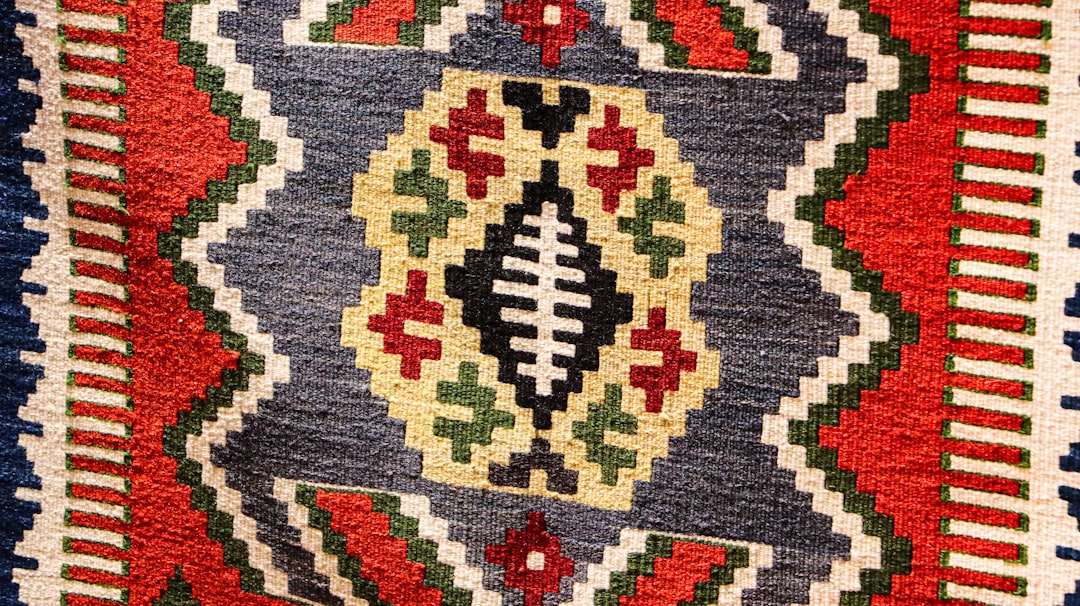 Photo from Unsplash
Photo from Unsplash
Originally Posted On: https://rugsource.com/the-history-of-kilim-rugs-nomadic-roots-to-modern-interiors/
The History of Kilim Rugs: Nomadic Roots to Modern Interiors
Kilim rugs are known for their bold geometric designs and rich colors, but they carry much more than visual appeal. Steeped in history, Kilim rugs have been crafted for centuries by nomadic cultures, serving both functional and artistic purposes. Today, these flatwoven textiles have made their way from the tents of ancient tribes into modern homes across the world. Let’s explore the fascinating journey of Kilim rugs, from their origins in nomadic life to their place in contemporary interiors.
Origins of Kilim Rugs
The art of weaving Kilim rugs dates back thousands of years, with the oldest known examples coming from ancient Mesopotamia and the surrounding regions. These rugs were primarily crafted by nomadic tribes in parts of the Middle East, North Africa, and Central Asia, particularly in regions like Turkey, Iran, Afghanistan, and Morocco. Historically, Kilim rugs were essential for daily life—used not just as floor coverings but also as wall hangings, saddle blankets, and even prayer mats.
These rugs were traditionally made by women, and their patterns were often passed down through generations. In this way, the artistry and skills behind Kilim weaving were deeply intertwined with family and tribal traditions. Each Kilim rug often told a personal story or represented the weaver’s cultural identity through its unique symbols and motifs. This deep cultural connection is one reason why Kilim rugs have maintained their importance and appeal for so long.
Traditional Weaving Techniques
Unlike traditional pile rugs, Kilim rugs are flatwoven using a special technique. The process involves interweaving the warp and weft strands of wool or cotton on a horizontal loom to create a flat surface with no pile, giving Kilims their distinct texture. This method not only makes the rugs lightweight and versatile but also gives them their bold, geometric patterns.
Weavers traditionally used natural materials, such as sheep’s wool, goat hair, and even silk, for weaving. Natural dyes derived from plants, minerals, and insects were used to color the rugs. Over time, these natural dyes fade slightly, creating the soft, muted tones that are so highly valued in vintage Kilims today.
The designs of Kilim rugs are rich and symbolic. Motifs like diamonds, zigzags, and ram’s horns often represent protection, fertility, and prosperity. These symbols aren’t just decorative; they hold cultural significance, linking the weaver’s life experiences, tribal beliefs, or hopes for the future.
Cultural Significance of Kilim Rugs
For the nomadic tribes that created them, Kilim rugs were more than just decorative or functional items. They represented a piece of home that could be easily transported as tribes moved from one place to another. These rugs were often displayed in tents or homes, symbolizing the tribe’s wealth and status while also serving as protective barriers against the elements.
In regions like Turkey and Iran, Kilim rugs held immense cultural value and were often part of a bride’s dowry. The more elaborate the patterns and vibrant the colors, the more prestigious the rug. Each region had its own unique style, which can still be recognized today by collectors and enthusiasts. For example, Turkish Kilims are often distinguished by their bold red hues and complex geometric designs, while Moroccan Kilims may feature more earth-toned palettes with intricate diamond motifs.
The Evolution of Kilim Rugs in Modern Interiors
Although Kilim rugs originated in nomadic cultures, they have evolved over time and found a place in homes across the world. In the 20th century, Western designers and collectors began to appreciate the craftsmanship and artistry of Kilim rugs, bringing them into the spotlight of global design.
Today, Kilim rugs are celebrated for their versatility and ability to blend with both traditional and modern decor styles. Their geometric patterns, often in muted tones or vibrant colors, make them ideal for adding character to minimalist spaces. Kilims can be found in living rooms, bedrooms, and even outdoor patios, where they serve as both functional and decorative pieces.
One reason for their enduring appeal is their timeless design. While many contemporary rugs follow seasonal trends, Kilim rugs offer a classic, handcrafted look that never goes out of style. Whether used as a statement piece in a modern living room or as a subtle accent in a traditional space, Kilim rugs bring a sense of history and global craftsmanship into the home.
Why Kilim Rugs Remain Timeless
Despite their ancient origins, Kilim rugs remain incredibly relevant in modern design. Their lightweight construction makes them easy to transport and maintain, while their flatweave texture offers durability for high-traffic areas. Moreover, the use of natural materials and traditional techniques in their creation appeals to those seeking sustainable and eco-friendly decor options.
Another reason Kilim rugs are timeless is their versatility. They fit effortlessly into a variety of design styles—whether your home is modern, bohemian, or eclectic. Their vibrant patterns can serve as the focal point of a room, while their subtle color variations make them ideal for layering with other rugs or textiles.
Conclusion
Kilim rugs are more than just beautiful floor coverings; they are pieces of history that tell the story of nomadic cultures and ancient traditions. From their practical origins in the Middle East and Central Asia to their widespread use in modern interiors, these rugs have proven to be timeless and versatile. Whether you’re looking for a bold statement piece or a subtle accent, a Kilim rug offers a perfect blend of craftsmanship, culture, and design.
Ready to bring the beauty of Kilim rugs into your home? Explore Rug Source’s extensive collection of authentic Kilim rugs, and find the perfect piece to add both heritage and style to your space.













